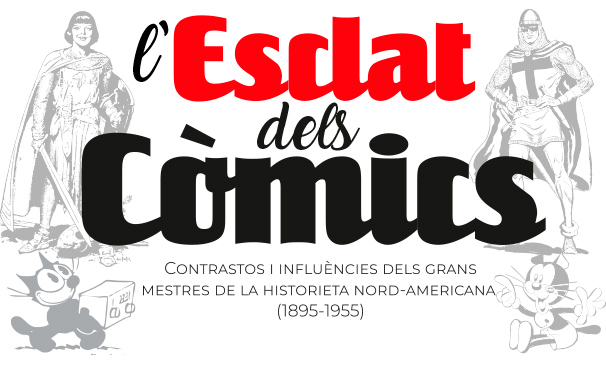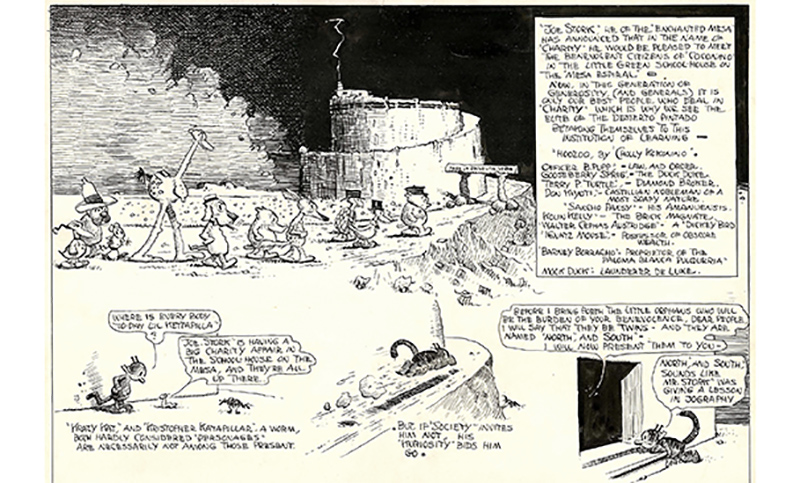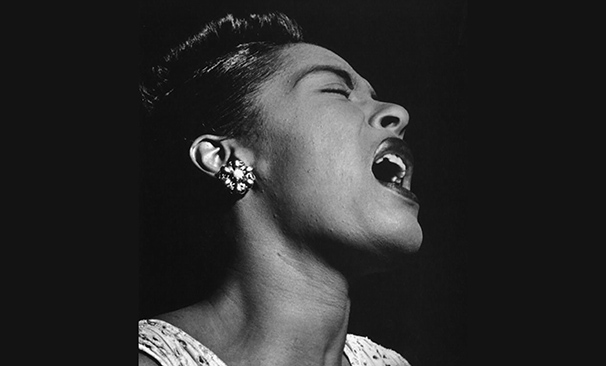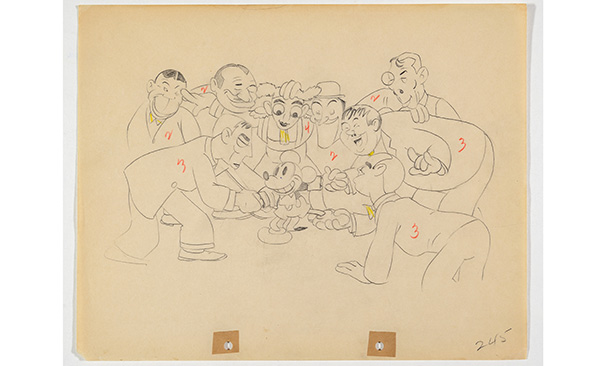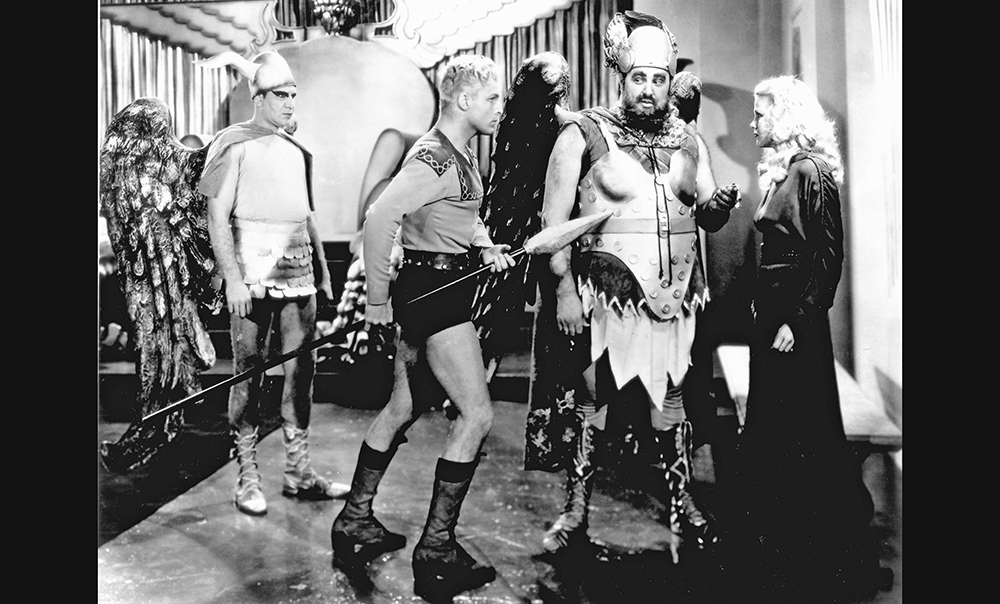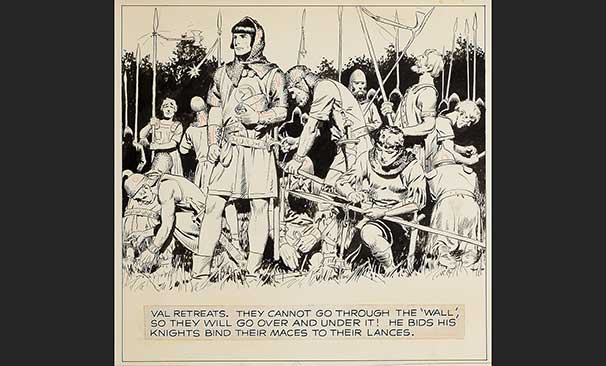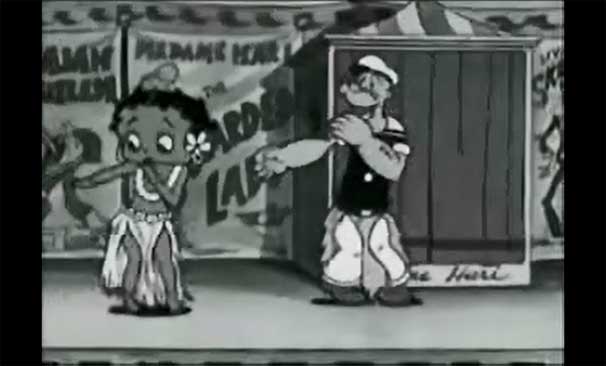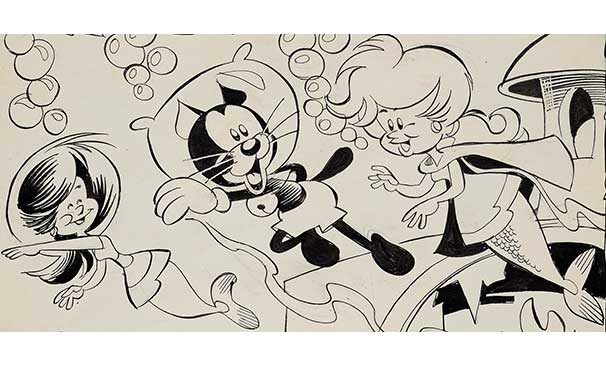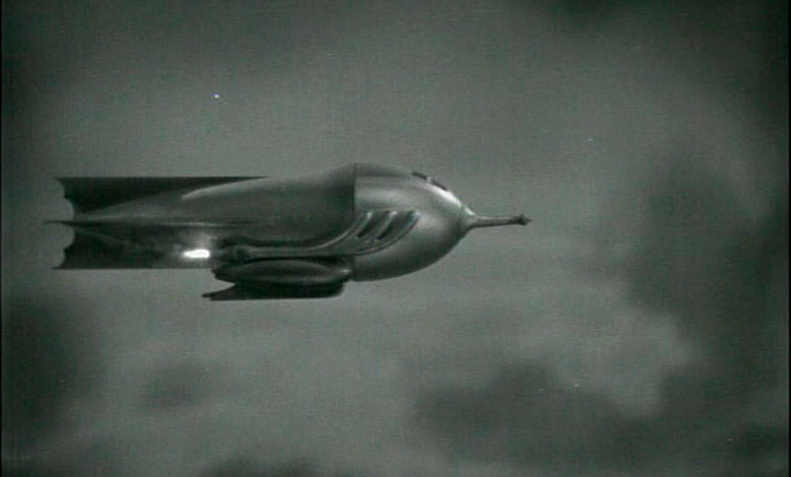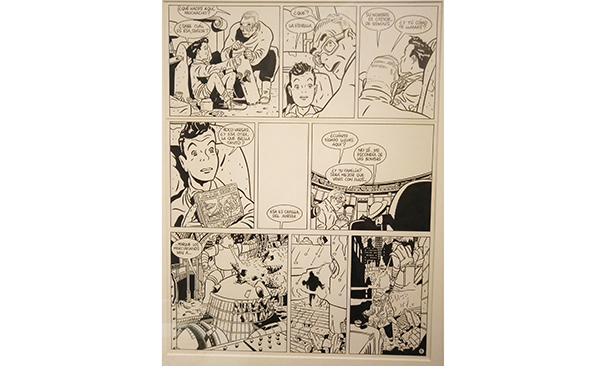What are you looking for?
You might be looking for...
Herois de paper i tinta
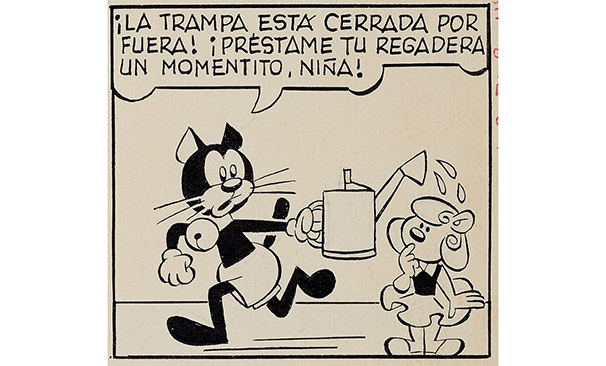
The birth and blooming of comics in the United States spawned some appealing and convincing creatures which quickly began to cross borders. Readers and cartoonists of the "old" continent were fast to recognize the sense of this last adjective. They were old and "the other thing" was "new". United States novelties fascinated them. North American comic opened the eyes, firstly, of the European employers of children and youth magazines and, subsequently, the eyes of the artists who strictly followed their predecessors' rigid moulds. Very quickly, Felix the Cat, Mickey and all Disney's characters, Popeye and many more stars of the sky in North American fantasy came into the European homes an started to be celebrated, while copies, plagiarism and derivates multiplied themselves. Soon after Tarzan, The Phantom or Flash Gordon appeared in American news stands, they rapidly spread across Spain featuring in three publications: Yumbo (1934), Aventurero (1935) and Tim Tyler (1936). These three magazines, which catapulted the company Hispano Americana de Ediciones to stardom, as it happened in France and Italy and Germany, were the entrance door of modern comic in Spain.
To build on this success, the Barcelona publishing house Molino retained the heroes Hispano Americana didn't publish and filled Mickey's magazine (1935), where Disney's characters, with now exclusive rights, completed the huge success they enjoyed on cinema. The influence of this entire universe in Spanish cartoonists was enormous. Although TBO, the local, strongest and with a longest life magazine apparently was not suffering, some of his cartoonists did surrender and also many other publishing houses. Who could resist?
The outbreak of war on 1936 caused a halt in that success and that influence. Franco's victory diluted the North American heroes' names, in a time where the new Spanish government lined up with Italian Fascism and German Nazism. But publishers did not give up on the adventures and characters which had rooted among readers before the war and which were even going to root deeper in the post-war period. How can we deny those heroes' influences, that drawing style in Manuel Gago or Jesús Blanco, just to mention two of the largest references of comic strips in Franco's Spain? El Guerrero del Antifaz, Cuto, El Pequeño Luchador, even someone as Spanish as Roberto Alcázar, owed a lot to the American heroes. Obviously, not everything, because Spanish tradition also had much weight. It is true that there was a clear influence of this own tradition on the scripts which were inspired on both the North American series and the previous Spanish soap operas. In children and comedy cartoons, Disney hovered over Emili Boix and Josep Sanchis' shadows. “Hipo, Monito y Fifí” or Pumby, Chivete and Blanquita, are Disney's factory derivate characters. In the Editorial Valenciana, its alma mater, Josep Soriano Izquierdo, came from a tradition forged on the Catalan and Valencian satirical press, with a drawing stroke that linked it to the L’Esquella de la Torratxa or La Traca. His Jaimito, the character who gave his name to the magazine, was like that, but it was also inspired on the influence of North American cinema. Sanchis, on the contrary, had already been through Disney's blender.
We have selected some of the most outstanding names of the period studied. As it’s said, not all those that are interesting are there, but all those that are there are interesting. Undoubtedly, their work speaks for them and thanks to their tenacity in times more than difficult; we could and can enjoy the fruit of their imagination. Thanks masters!
Josep Sanchis Grau Pumby Manuel Gago El guerrero del antifaz Marí Benejam i Ferrer La familia Ulises Josep Escobar i Saliente Miguel Ambrosio Zaragoza, Ambrós Ambrós, El capitán Trueno Josep Coll i Coll Pesca peligrosa Guillermo Sánchez Boix, Boixcar Hazañas bélicas Eugeni Giner i Martí Inspector Dan Eduardo Vañó Pastor Roberto Alcázar y Pedrín

